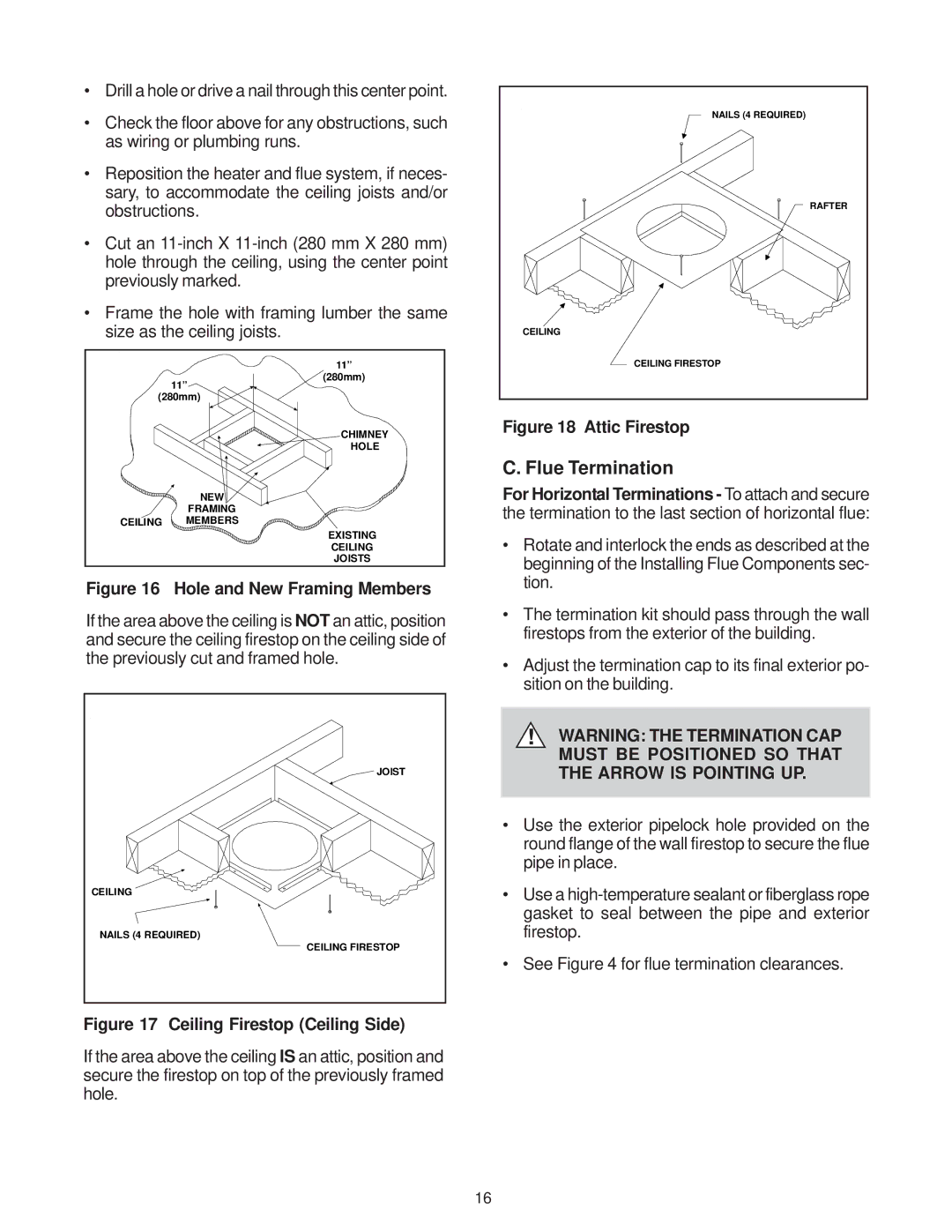
•Drill a hole or drive a nail through this center point.
•Check the floor above for any obstructions, such as wiring or plumbing runs.
•Reposition the heater and flue system, if neces- sary, to accommodate the ceiling joists and/or obstructions.
•Cut an
•Frame the hole with framing lumber the same size as the ceiling joists.
NAILS (4 REQUIRED) |
RAFTER |
CEILING |
11”
11”
(280mm)
CEILING FIRESTOP |
(280mm)
CHIMNEY
HOLE
NEW
FRAMING
CEILING MEMBERS
EXISTING
CEILING
JOISTS
Figure 16 Hole and New Framing Members
If the area above the ceiling is NOT an attic, position and secure the ceiling firestop on the ceiling side of the previously cut and framed hole.
JOIST |
CEILING |
NAILS (4 REQUIRED) |
CEILING FIRESTOP |
Figure 17 Ceiling Firestop (Ceiling Side)
If the area above the ceiling IS an attic, position and secure the firestop on top of the previously framed hole.
Figure 18 Attic Firestop
C. Flue Termination
For Horizontal Terminations - To attach and secure the termination to the last section of horizontal flue:
•Rotate and interlock the ends as described at the beginning of the Installing Flue Components sec- tion.
•The termination kit should pass through the wall firestops from the exterior of the building.
•Adjust the termination cap to its final exterior po- sition on the building.
!WARNING: THE TERMINATION CAP MUST BE POSITIONED SO THAT THE ARROW IS POINTING UP.
•Use the exterior pipelock hole provided on the round flange of the wall firestop to secure the flue pipe in place.
•Use a
•See Figure 4 for flue termination clearances.
16
